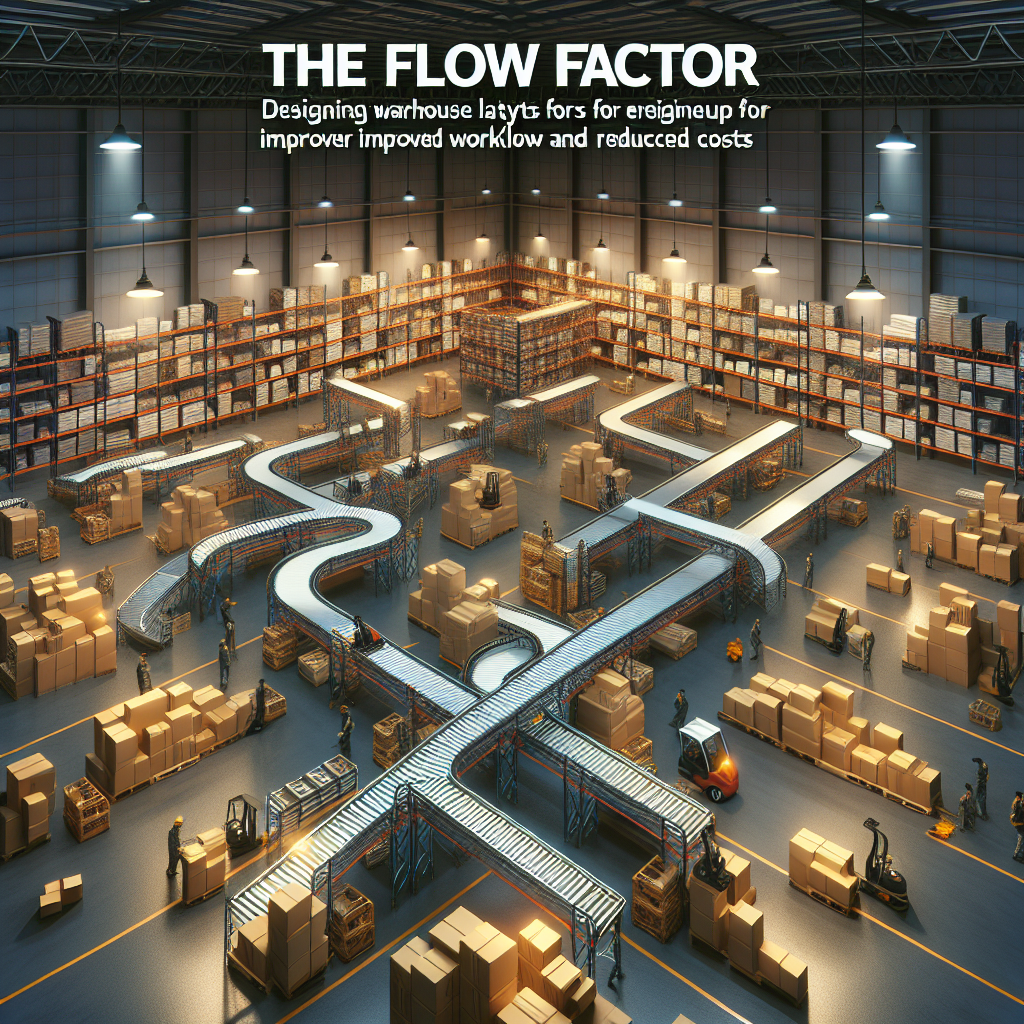In today’s fast-paced business environment, efficient warehouse management is crucial for success. With e-commerce booming and customer expectations rising, the need for optimized warehouse layouts has never been more critical. By focusing on flow factor, companies can significantly improve their workflow and reduce operational costs. In this article, we will delve into the importance of warehouse design, explore effective strategies, and examine real-world examples.
Understanding the Flow Factor
The term “flow factor” refers to how well a warehouse facilitates the movement of goods and personnel. An optimized flow ensures minimal delays and maximizes space utilization. When warehouses are designed with flow in mind, they not only improve efficiency but also enhance employee satisfaction. An organized, navigable workspace reduces frustration and fosters productivity.
Why Warehouse Layout Matters
A well-thought-out warehouse layout plays a vital role in operational efficiency. Here are a few key reasons why it matters:
- Space Utilization: Every square foot in a warehouse is valuable. Proper layout helps maximize vertical and horizontal space.
- Reduced Costs: Streamlined processes can lead to reduced labor costs, decreased shipping expenses, and lower inventory holding costs.
- Faster Pick and Pack Times: An efficient layout reduces travel time for employees, accelerating the order fulfillment process.
- Enhanced Safety: An intuitive design minimizes accidents and promotes a safe working environment.
Key Principles of a Successful Warehouse Layout
1. Zoning for Efficiency
Zoning involves designating areas for specific functions such as receiving, storage, picking, packing, and shipping. By grouping similar activities together, a warehouse can minimize unnecessary movement. For instance, placing packing stations near storage areas reduces the time spent transporting goods. This approach not only improves workflow but also simplifies training for new employees.
2. Implementing an Appropriate Storage Method
Selecting the right storage method is crucial. Options include:
- Pallet Racking: Ideal for bulk items, providing easy access and maximizing vertical space.
- Flow Racks: Suitable for high-turnover items, allowing for a first-in-first-out (FIFO) inventory system.
- Shelf Storage: Best for smaller items or those that require organization by SKU.
Each method offers its unique benefits, and the choice should align with the inventory profile and demand patterns.
3. Minimizing Travel Time
An effective warehouse layout minimizes unnecessary travel. Here are some strategies to consider:
- Shorten Aisles: Create more aisles for narrow layouts, allowing workers to easily access different inventory sections.
- Optimize Picking Paths: Analyze order patterns to develop efficient picking routes. Implementing a pick-to-light system can simplify this process.
- Utilize Mobile Workstations: Deploying mobile picking carts or stations can help eliminate frequent trips back to a centralized picking area.
Integration of Technology: The Warehouse of the Future
Embracing Automation
Automation is increasingly becoming a game-changer in warehouse design. Technologies such as automated storage and retrieval systems (AS/RS), robotics, and conveyor systems can streamline operations and enhance accuracy. By automating repetitive tasks, employees can focus on more value-added activities, improving overall productivity.
Real-Time Data for Adaptive Layouts
Incorporating data analytics can provide insights into inventory movement and help in adjusting layouts based on real-time demand. With sophisticated warehouse management systems (WMS), businesses can track goods accurately, understand peak times, and adapt layouts accordingly.
Humanizing the Warehouse Environment
While technology plays a pivotal role, the human aspect of warehouse design should not be overlooked. A well-designed workspace contributes greatly to employee morale and retention.
Consideration of Employee Needs
- Break Areas: Creating comfortable and accessible break rooms for employees can enhance job satisfaction and productivity.
- Training Facilities: Integrating training areas can help in seamless onboarding, ensuring that new hires are well-prepared.
- Safety Protocols: An easy-to-navigate layout aids in identifying hazards and ensuring compliance with safety regulations.
Conclusion: The Path to Improved Workflow and Reduced Costs
Designing a warehouse with a focus on the flow factor creates a win-win situation. Not only does it enhance operational efficiency, but it also contributes to better employee experiences. By utilizing zoning, appropriate storage methods, and embracing technology, businesses can sculpt a responsive and adaptive warehouse environment.
The result? Improved workflow, reduced costs, and a stronger foundation for long-term success. Investing time and resources into effective warehouse design is an integral part of navigating the complexities of modern logistics, ultimately ensuring that businesses stay ahead in a competitive marketplace.


